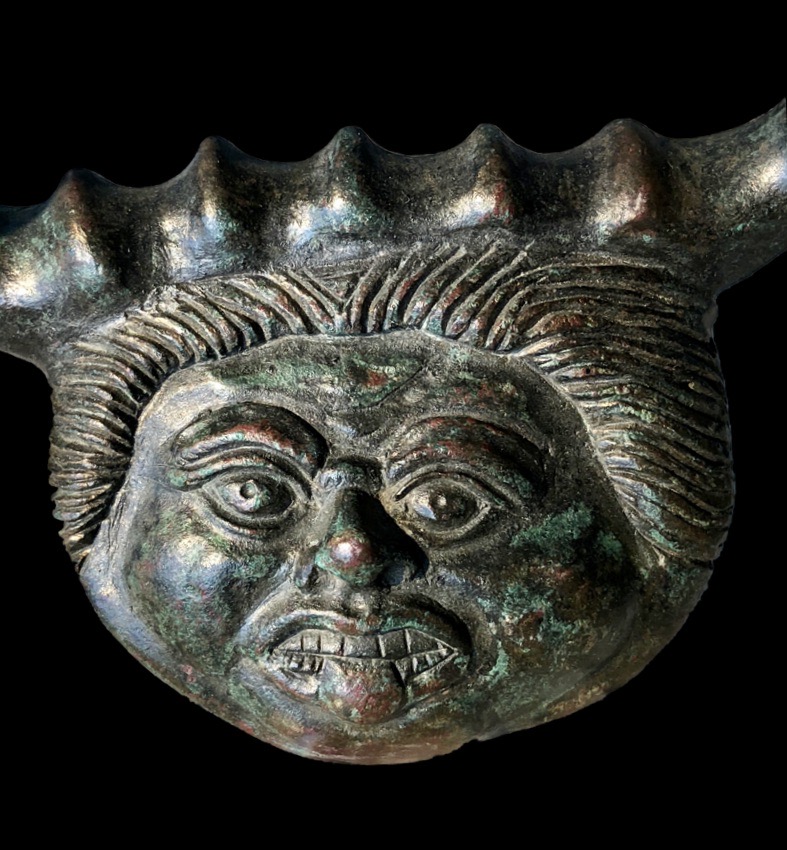
Bronze
Etruscan, 6th century BC
Face H. 5,5cm; Handle H. 5.5cm; Overall W. 9.4cm
Etruscan bronze handle with Gorgon’s face. An exceptional artefact with a superb provenance.
Published in the auction catalogue of Froener, Paris 1885, Lot Nr. 150
Condition: Excellent with marvelous green patina
Provenance: ex. Collection Louis-Gabriel Bellon (1819-1899) and before, in the collection of Julien Gréau.
A Gorgoneion is a protective symbol in ancient Greek art that depicts the head of the Gorgon, a mythical creature with snakes for hair and a terrifying gaze that could turn people to stone. The Gorgoneion was believed to have the power to ward off evil and protect the person who wore it or displayed it.
The image of the Gorgoneion was often used as an apotropaic symbol, meaning it was used to ward off evil or bad luck. It was often depicted on shields, armor, or even as an architectural feature on buildings. The symbol was also sometimes used in jewelry, such as amulets or pendants, and was believed to bring good luck and protection to the wearer.
The most famous depiction of the Gorgoneion is probably the one on the aegis, a shield or breastplate worn by the goddess Athena in Greek mythology. The Gorgoneion was placed at the center of the aegis, and it was believed to give the goddess the power to terrify her enemies and protect her allies.
Item reference: CL1024
